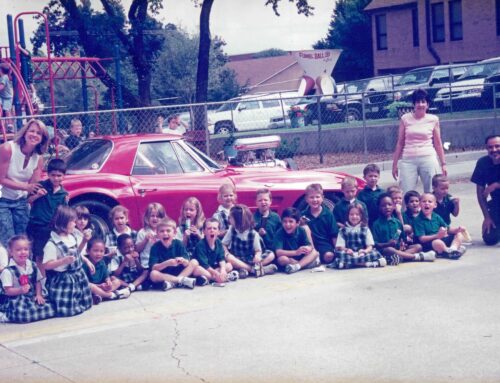“I was a normal, well-adjusted architect before the bug bit me,” laughs neighborhood resident Norman Alston whose firm is one of only a handful in the state specializing in restoring historic structures.
“What happened was that in 1998, the local chapter of the American Institue of Architects was working on one of the two remaining 1936 Homes of the Future at Fair Park. And I volunteered, innocently enough, to help. That’s what did it for me – sucked me in.
“I found that I loved it… I found myself at work waiting for lunch time and after hours when I could work on that project and others like it. Looking back, I guess it had always been in me.
“I just like to play with other people’s old buildings.”
Alston said it took establishing his own practice and years of learning to be able to focus on doing preservation work professionally.
“It clearly demonstrates how unprepared I was at the time to go out on my own, since all I had was a lot of community service and a lot of interest. It was a difficult market and to try to start a business in a niche that you really don’t have a lot of experience in or contacts… was not the brightest thing I’ve ever done.”
But Alston held on to his love of crumbling mortar and hidden wainscoting, and since that time some of his projects have included the Layland Museum-Carnegie Library in Cleburne; the Sagamore Cottage in Jefferson; the Erath County Courthouse; and exterior restoration of South Side Lamar – the original Sears Dallas Catalog Distribution Center.
Of the latter, Alston says: “In addition to restoring over 1,000 historic wood and steel windows, we looked through the original drawings and photographs in order to re-build the original 1925 entrance, which had been torn down. Sometimes this job is a little like being a detective.:
The state preservationist even goes home to a historic neighborhood at the end of the day, which isn’t too hard to manage in our part of town.
Fifteen years ago, Alston’s wife, Jean, a nurse at Doctors Hospital, was taking the bus to work right through a part of East Dallas called Hollywood Heights.
“She came home one day and said: You’ve got to see this neighborhood,” Alston says.
“We loved the beautiful old homes and the tree-lined streets. And this was before I was specializing in historic buildings as an architect.
“We’ve been there ever since and have no plans to leave.”
The Alstons have three children: Leslie, a freshman at UT; Karen, a junior at Woodrow Wilson High School; and Charlie, 11, at Lakewood Elementary. The architect says that the schools were another compelling reason the couple moved to the area.
“The girls hadn’t started school yet, and we were anxious to get them into Lakewood because we had been enchanted with the school system here ever since. We’re pretty big advocates – we think Woodrow was a God-send to us.”
Even though Alston is a fan of the residential architecture in our neighborhood, his firm really doesn’t do much work in the area.
“Most people need more help than they really can afford from an architect in many instances (for their home),” he says, nevertheless offering up some practical advice to those who are undertaking these projects.
“It’s as much what you don’t do as what you do,” he says. “People spend money they don’t have to on a historic home – change things they really shouldn’t. It’s not supposed to be new or perfect. Enjoy the quirks… just fix what you really need to.”
That’s the same philosophy with which Alston approaches larger commercial projects, and he says saving an old building and finding a new public use for it is not only in the interest of history, it’s usually cheaper.
“I’m happy doing what I do,” Alston says. “I still marvel at the things we see and the things we work on.”





